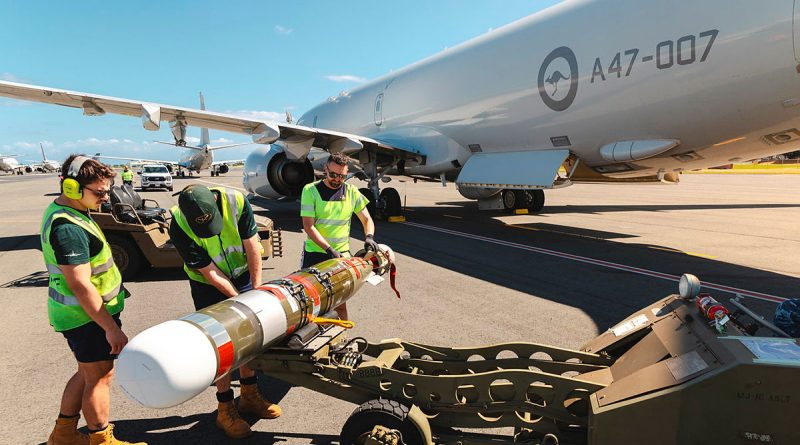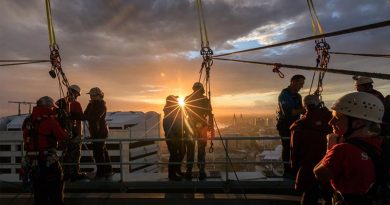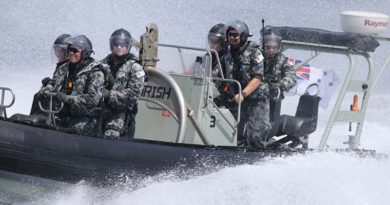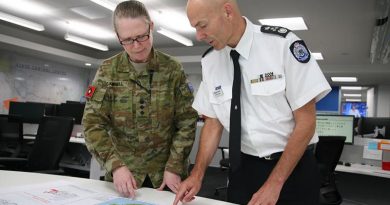Poseidon hunts submarines in the Pacific

A Royal Australian Air Force P-8A Poseidon dropped four exercise torpedoes on a US Navy nuclear submarine during a maritime patrol serial at Exercise Rim of the Pacific (RIMPAC).
CAPTION: Air Force aviators from 11 Squadron transfer a Mk54 Lightweight exercise torpedo to a RAAF P-8A Poseidon during Exercise Rim of the Pacific 2024, at Joint Base Pearl Harbor-Hickam, Hawaii. Story by Lieutenant Carolyn Martin. Photos by Corporal Adam Abela.
11 Squadron Commander and tactical coordinator Squadron Leader Tristan Hull said it was the first time an Australian P-8A had dropped this variant of the Mark 54 Lightweight Exercise Torpedo.
“It is not very often that we get to drop exercise torpedoes,” Squadron Leader Hull said.
“It’s almost certainly the highlight of a tactical coordinator’s career being able to do this, and on a live target is rare. So it’s pretty special for us to be here at RIMPAC this year.”
Australia’s P-8A Poseidon entered the live fire area to the north of the Hawaiian Islands early on Wednesday, July 10, integrating with a US Navy P-8A.
The two Poseidon aircraft conducted range surveillance – essentially flying a grid search pattern at low altitude to hunt down the exact location of the submarine – while a MQ-9A unmanned aerial vehicle flew above the P-8As to record the training exercise.
In this exercise scenario, the crews were given coordinates for the submarine, the Los Angeles-class attack submarine USS Topeka SSN 754, but it was up to the P-8A to establish organic tracking and attack criteria.
“We dropped sonobuoys to determine the track of the submarine” Squadron Leader Hull said.
“Once we were able to establish position, course and speed of the submarine we were able to derive a solution that met our attack criteria and appropriate weapon placement to ensure maximum success.
“The process of dropping a Mark 54 exercise torpedo on top of a submarine is a collaborative effort between the crew.
“The tactical coordinator needs to position sonobuoys appropriately in the water, the acoustics operator needs to interpret that information, and the pilots need to fly the aircraft efficiently before an attack solution can be derived in order to position the weapon to acquire the target.”
Four tactical coordinators on board the RAAF P-8A each dropped a Mark 54 exercise torpedo. The torpedoes are capable of tracking, classifying and attacking underwater targets.
Exercise torpedoes do not come into contact with the target and there is no explosion.
After a pre-determined time, the torpedoes float to the surface and are retrieved for assessment, reconfiguration and reuse.
Squadron Leader Hull said that, based on the crew’s own tracking, attack criteria and weapon placement, they expect that each of the weapon drops would have been successful in acquiring their target.
“A helicopter retrieves the exercise torpedoes after each drop,” he said.
“Further analysis of the weapon and its data will ultimately determine if the torpedo was successful in chasing down that target.”
Squadron Leader Hull said an exercise as large as RIMPAC enabled training outcomes for the squadron that it would not necessarily be able to achieve in Australia.
.
.

.
.





